Common Infertility Acronyms And Abbreviations
AMH: AMH, or anti-Müllerian hormone, is the best predictor of a woman’s ovarian reserve. AMH is a protein produced by the granulosa cells in ovarian follicles. AMH blood levels are indicative of the size of the pool of follicles remaining; thus, as a woman gets older, the size of the ovarian follicle pool decreases and the AMH level also decreases, becoming undetectable at the time of menopause.
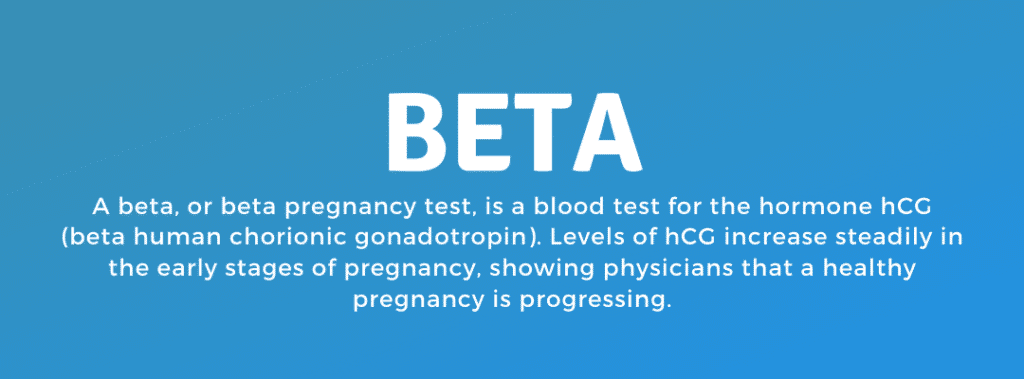
FSH: FSH, or follicle-stimulating hormone, is released by the brain to stimulate the ovarian follicles (tiny fluid-filled sacs within the ovary containing a maturing egg) to grow and develop.
BW: Bloodwork (BW) is a vital component of your infertility work-up. The bloodwork is testing for different hormone levels, which will help your physician establish a diagnosis.
DE: DE, or donor egg, refers to donor egg treatment, which is needed by women who are unable to use their own eggs for conception, but can still carry a child in their uterus; women who have decreased ovarian function, premature ovarian failure, or genetic abnormalities; or same-sex male couples using a gestational carrier.
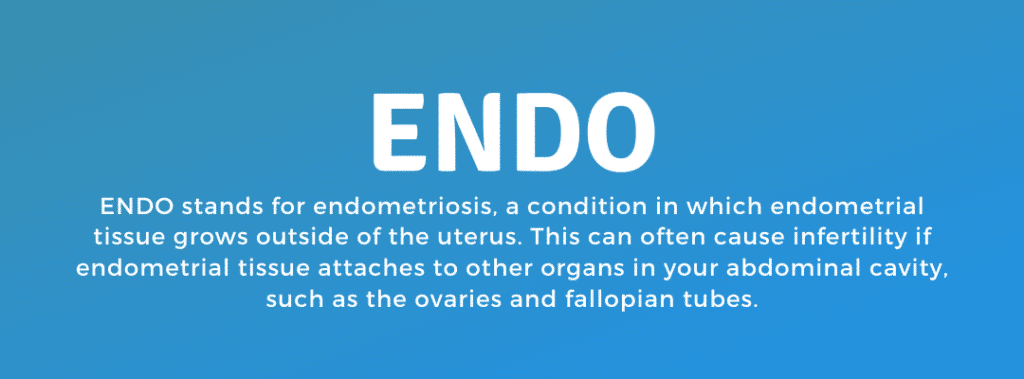
FSH: FSH, or follicle-stimulating hormone, is released by the brain to stimulate the ovarian follicles (tiny fluid-filled sacs within the ovary containing a maturing egg) to grow and develop.
GC: A gestational carrier is commonly used for women who are unable to carry their own child or for same-sex couples. Different than a “traditional surrogate,” gestational carriers have no biological link to the child(ren).
hCG: Beta Human chorionic gonadotropin, or B-hCG or simply hcg, is a hormone produced during pregnancy. Levels of hCG increase steadily in the early stages of pregnancy, showing physicians that a healthy pregnancy is progressing. A beta pregnancy test specifically looks for hCG.
HSG: A hysterosalpingogram (HSG) determines the condition of the fallopian tubes and uterus. When an HSG is performed, dye will be placed through the cervix into the uterus and fallopian tubes. An x-ray will determine if the uterine cavity is normal and the tubes are open. This is the best test to look at the tubes and also provides the opportunity to look at the shape and contour of the uterus.
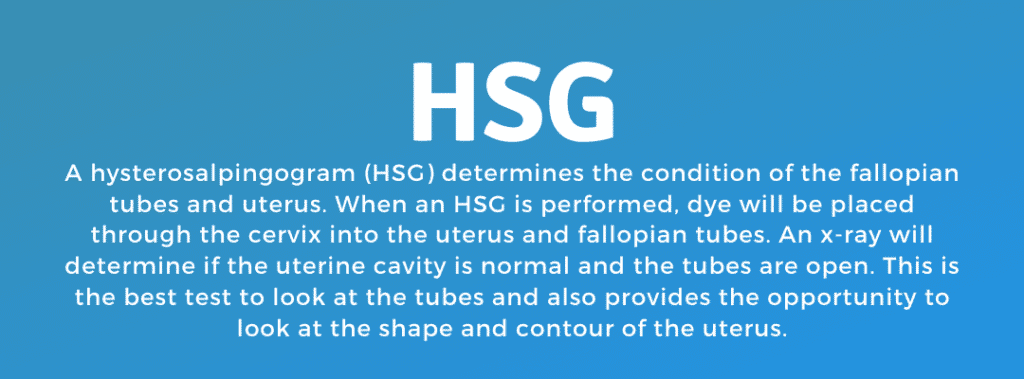
ICSI: Intracytoplasmic sperm injection (ICSI) is a treatment utilized when the quantity or quality of sperm is too poor to effectively penetrate the egg on its own. An embryologist will select a single healthy sperm and inject it directly into the center of the egg. This has been an incredibly effective treatment for male factor infertility.
IUI: Intrauterine insemination (IUI) is a low-tech fertility treatment that involves placing sperm inside a woman’s uterus to facilitate fertilization. Placing the sperm directly into the uterus makes the trip to the fallopian tubes much shorter, providing the sperm with a shorter distance to reach the egg.
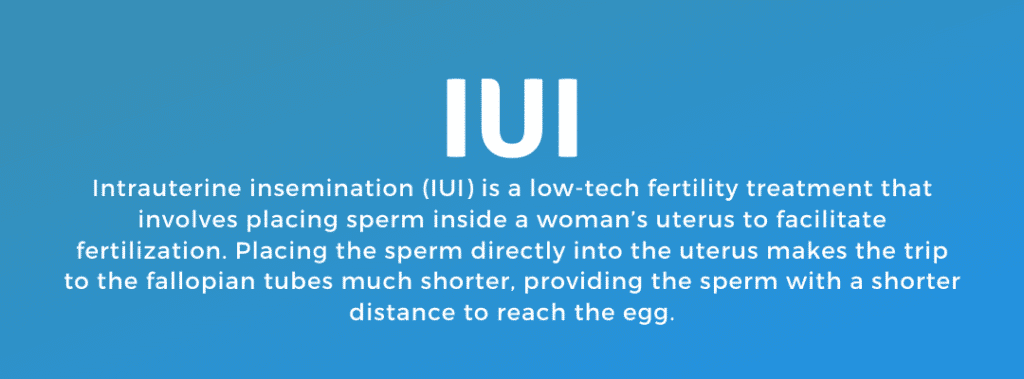
IVF: In vitro fertilization (IVF) is a method of assisted reproduction that involves combining an egg with sperm in a laboratory dish. If the egg fertilizes and the cells begin to divide, the resulting embryo is transferred into the woman’s uterus where it will hopefully implant in the uterine lining and further develop.
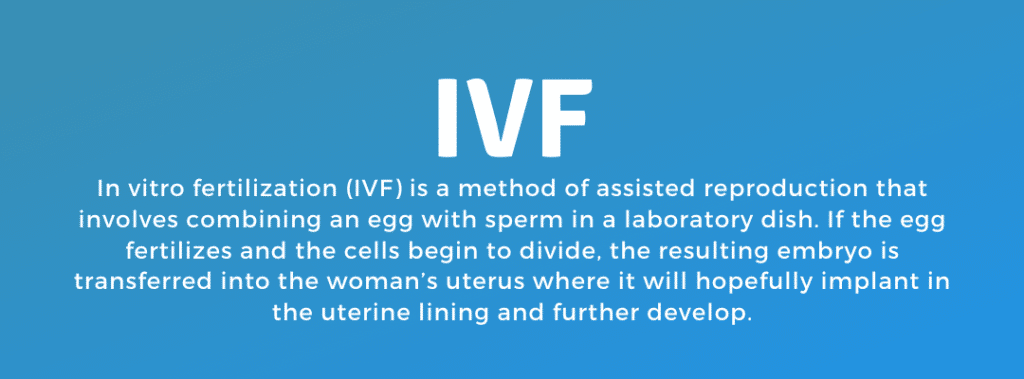
LH: Luteinizing hormone (LH) is produced by the gonadotropin cells in the pituitary gland. In women, the rise of LH (known as the “LH surge”) triggers ovulation, or the release of the eggs.
MF: MF represents male factor infertility, which can occur from structural abnormalities, sperm production disorders, ejaculatory disturbances, and immunologic disorders. Nearly 40 percent of infertility is related to male factor.
OHSS: OHSS stands for ovarian hyperstimulation syndrome, a rare complication of ovarian stimulation. This occurs when a woman develops fluid in the abdomen and has enlarged ovaries.
P4: P4, or the hormone known as progesterone, is tested to determine the following:
Progesterone levels will surge before ovulation and should continue to rise if you become pregnant.
PCOS: Polycystic ovary syndrome (PCOS) is a disorder in which the ovaries produce excessive amounts of male hormones and the ovaries develop many small cysts. These hormonal imbalances can prevent ovulation.
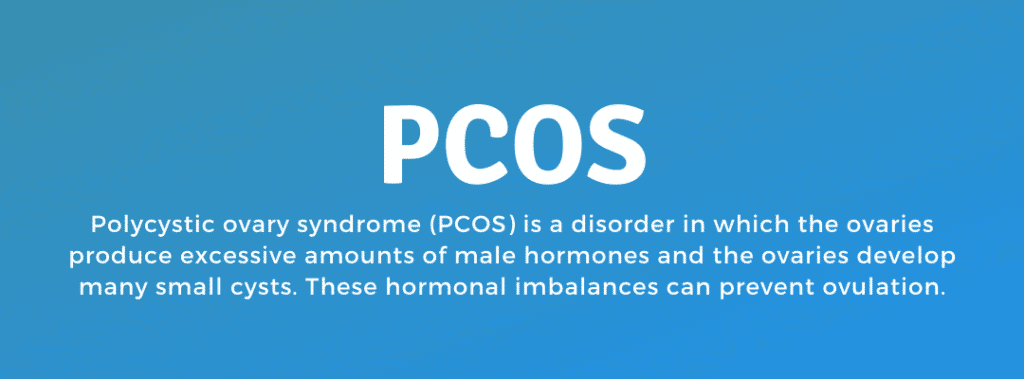
PGS: Preconception genetic screening (PGS)is a state-of-the-art procedure used in conjunction with IVF to select embryos that are free of chromosomal abnormalities and specific genetic disorders, in order to transfer the embryo to the uterus.
PGD: Preimplantation genetic diagnosis (PGD) Can test prospective parents for many different diseases and syndromes. Genetic screening may test for traits that are common in certain ethnic groups that are recessive, or that may have some likelihood of causing serious diseases in affected offspring.
RPL: Recurrent pregnancy loss (RPL) is defined as two or more consecutive, spontaneous pregnancy losses before the pregnancies reach 20 weeks. Recurrent miscarriages can be attributed to a variety of factors, including a genetic defect, an abnormally-shaped uterus, fibroids, scar tissue, hormonal imbalances, and more.
SA: A semen analysis (SA) must be performed prior to a treatment cycle in order to evaluate the sperm’s potential to fertilize an egg. A semen analysis tells your physician the number of sperm that are present, whether they are normal, and how well they move.
SI: Secondary infertility (SI) is defined as the inability to become pregnant—despite engaging in unprotected intercourse—following the birth of one or more biological children who were born without the aid of fertility treatment or medications.
TTC: TTC stands for trying to conceive. People generally consider ‘trying to conceive’ as the time period in which they have intentionally been trying to have a baby, but physicians consider it to be the entire time during which a couple is having regular, unprotected intercourse. Even if a couple is not intentionally trying to conceive, pregnancy should occur after approximately 1 year of unprotected intercourse.
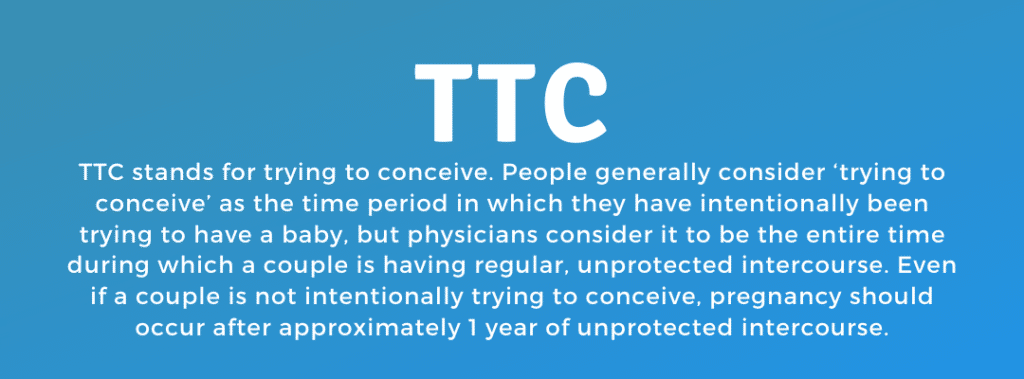
2WW: 2WW is also known as the two week wait. It takes about two weeks from the time a fertilized egg implants in the uterine wall to start emitting enough of the hCG hormone to be detected by the beta blood pregnancy test. After the two weeks have passed, physicians can be reasonably sure that a pregnancy test result is accurate. This can often be one of the most stressful parts of treatment for patients, as they are waiting to discover if they have become pregnant.
US: Ultrasounds (US) are useful, not only during ovarian reserve testing, but also to detect abnormalities of the ovaries, uterus, and other structures in the pelvis.


